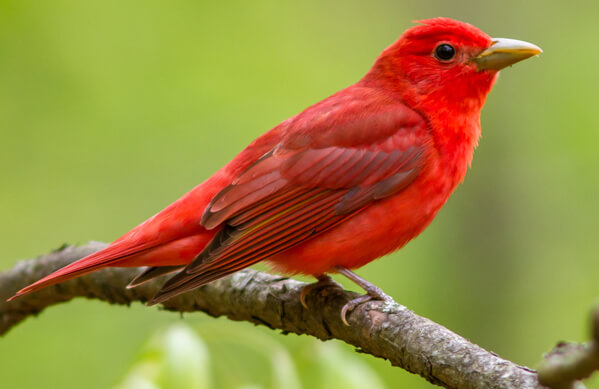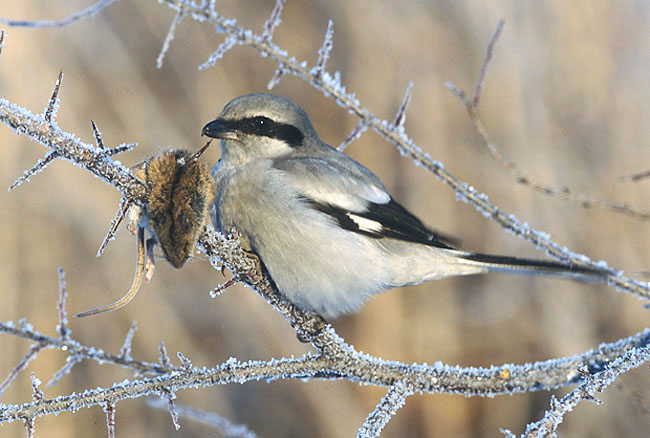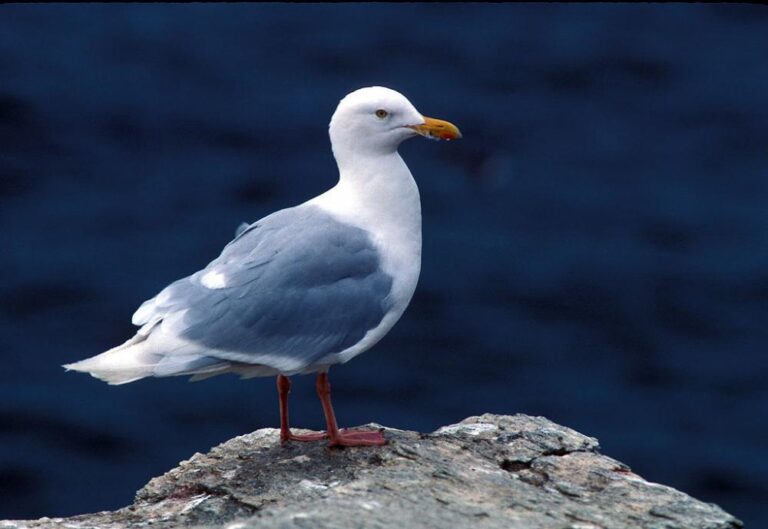Top 10 Largest Birds of Prey On Earth With Pictures
I’ve researched the largest birds of prey, and the wandering albatross stands out. With a wingspan that can reach up to 12 feet, it’s a true marvel of the skies. These majestic seabirds glide effortlessly over the Southern Ocean, covering vast distances in search of food. Their diet mainly consists of squid and fish. I find it fascinating how they adapt to life at sea. Join me as we explore more about these incredible creatures!
Common Largest Flying Birds of Prey On the Earth
- California Condor
- Andean Condor
- Cinereous Vulture
- Lammergeier
- Lappet-Faced Vulture
- Philippine Eagle
- Harpy Eagle
- Bald Eagle
- White-Tailed Eagle
- Steller’s Sea Eagle
What is the largest flying bird in the world
The largest flying bird in the world is the wandering albatross, known for its impressive wingspan, which can reach up to 12 feet (3.6 meters). These magnificent seabirds are found primarily in the Southern Ocean and are renowned for their ability to glide over vast distances with minimal energy. Their long, narrow wings allow them to soar effortlessly over the ocean, covering thousands of miles in search of food, primarily squid and fish. The wandering albatross is not only a symbol of grace in the skies but also a remarkable example of adaptation to marine life.
1. California Condor
• Scientific Name: Gymnogyps californianus
• Size: Wingspan up to 3 meters (9.8 feet)
• Weight: 8-14 kilograms (17.6-30.9 pounds)
• Lifespan: Up to 60 years in captivity
• Diet: Carrion (dead animals)
The California Condor is a true giant of the sky and holds the title of the largest flying bird in North America. With a wingspan that can reach up to 3 meters (almost 10 feet), these birds are an impressive sight to behold. Their massive size allows them to soar for hours without flapping their wings, riding thermal currents high above the landscape.
Despite their intimidating size, California Condors are gentle giants. They feed exclusively on carrion, playing a crucial role in their ecosystem by cleaning up dead animals. These birds have faced a troubled history, coming dangerously close to extinction in the 1980s when only 22 individuals remained in the wild. Thanks to intensive conservation efforts, their numbers have slowly increased, but they remain one of the rarest birds in the world.
2. Andean Condor
• Scientific Name: Vultur gryphus
• Size: Wingspan up to 3.3 meters (10.8 feet)
• Weight: 11-15 kilograms (24.3-33.1 pounds)
• Lifespan: Up to 50 years in the wild, 75 in captivity
• Diet: Carrion (dead animals)
The Andean Condor is a majestic bird that rules the skies over the Andes Mountains in South America. With a wingspan that can exceed 3 meters, it’s one of the largest flying birds in the world. These impressive birds are known for their striking appearance, with males sporting a distinctive fleshy comb on their heads.
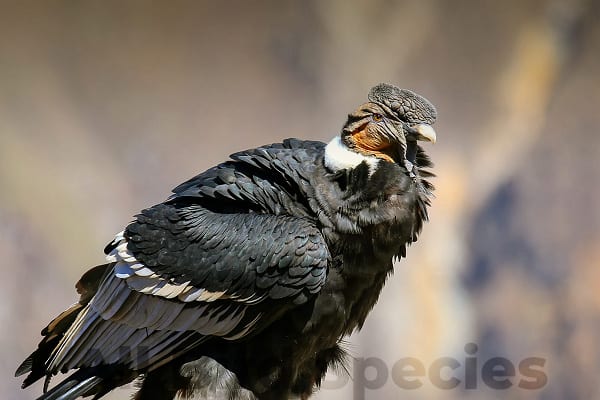
Like their California cousins, Andean Condors are vultures and play a vital role in their ecosystem by feeding on carrion. They can spot a meal from great distances and use their keen eyesight to locate dead animals on the ground. Andean Condors are incredibly long-lived birds, with some individuals in captivity reaching 75 years old! In many South American cultures, these birds hold a special place in mythology and are often seen as symbols of power and wisdom.
3. Cinereous Vulture
• Scientific Name: Aegypius monachus
• Size: Wingspan up to 2.9 meters (9.5 feet)
• Weight: 7-14 kilograms (15.4-30.9 pounds)
• Lifespan: Up to 39 years in captivity
• Diet: Carrion (dead animals)
The Cinereous Vulture, also known as the Black Vulture or Monk Vulture, is one of the largest birds of prey in the world. Native to parts of Europe and Asia, these impressive birds have a wingspan that can reach nearly 3 meters. Their dark plumage and bare head give them a somewhat intimidating appearance, but like other vultures, they play a crucial role in their ecosystems.

Cinereous Vultures, the world’s largest predatory bird are masters of soaring, able to stay aloft for hours with minimal effort. They use their excellent eyesight to spot carrion from great heights and can travel long distances in search of food. These vultures are known for their intelligence and have been observed using tools, a behavior not commonly seen in birds. Despite their size and impressive abilities, Cinereous Vultures face threats from habitat loss and poisoning, making conservation efforts crucial for their survival.
4. Lammergeier
• Scientific Name: Gypaetus barbatus
• Size: Wingspan up to 2.8 meters (9.2 feet)
• Weight: 4.5-7.5 kilograms (9.9-16.5 pounds)
• Lifespan: Up to 45 years in captivity
• Diet: Bone marrow and carrion
The Lammergeier, also known as the Bearded Vulture, is a unique and fascinating bird of prey. While not as heavy as some other large birds of prey, its wingspan of up to 2.8 meters makes it an impressive sight in the sky. What sets the Lammergeier apart is its unusual diet – it’s the only known bird that specializes in eating bone marrow!

Lammergeiers have a distinctive appearance with their feathered heads, unlike most vultures. They have a ‘beard’ of bristle-like feathers and striking orange plumage, which comes from dust-bathing in iron-rich soils. These birds have an incredible ability to break large bones by dropping them from great heights onto rocks below. Combined with their unique diet, this behavior has earned them the nickname “bone breaker.” Lammergeiers are found in mountainous regions across parts of Europe, Asia, and Africa.
5. Lappet-Faced Vulture
• Scientific Name: Torgos tracheliotos
• Size: Wingspan up to 2.9 meters (9.5 feet)
• Weight: 4.4-9.4 kilograms (9.7-20.7 pounds)
• Lifespan: Up to 50 years in captivity
• Diet: Carrion, small vertebrates
The Lappet-Faced Vulture is one of the largest vultures in Africa. Its name comes from the fleshy folds of skin on either side of its neck, called lappets. With a wingspan that can reach nearly 3 meters, these birds are impressive in flight and play a crucial role in their ecosystems as nature’s clean-up crew.

Unlike some other vultures, Lappet-Faced Vultures have strong beaks that allow them to tear through tough hides, making them often the first to feed at a carcass. They’re known for their intelligence and have been observed using tools to crack open ostrich eggs. These vultures are also notable for their parenting behavior – they mate for life and both parents share in incubating and raising their young. Unfortunately, like many large birds of prey, Lappet-Faced Vultures face threats from habitat loss and poisoning.
6. Philippine Eagle
• Scientific Name: Pithecophaga jefferyi
• Size: Wingspan up to 2.2 meters (7.2 feet)
• Weight: 4.7-8 kilograms (10.4-17.6 pounds)
• Lifespan: Up to 60 years in captivity
• Diet: Monkeys, flying lemurs, other birds, reptiles, and small mammals
The Philippine Eagle, also known as the Monkey-eating Eagle, is one of the largest and most powerful eagles in the world. Endemic to the Philippines, this bird is a true giant of the rainforest. While its wingspan isn’t as large as some vultures, its body length and weight make it one of the most impressive birds of prey.
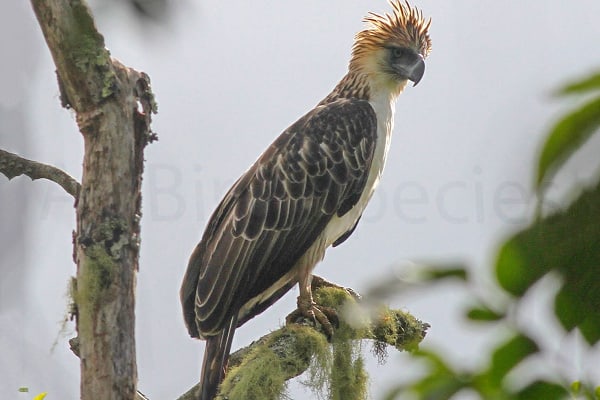
What truly stands out about the Philippine Eagle is its striking appearance. Its shaggy, pale golden-brown, and white crest gives it an almost lion-like appearance. These eagles are apex predators in their forest homes, capable of taking prey as large as monkeys and small deer. Sadly, the Philippine Eagle is critically endangered due to habitat loss and hunting. Conservation efforts are crucial to ensure the survival of this magnificent bird, which is also the national bird of the Philippines.
7. Harpy Eagle
• Scientific Name: Harpia harpyja
• Size: Wingspan up to 2.2 meters (7.2 feet)
• Weight: 4-9 kilograms (8.8-19.8 pounds)
• Lifespan: Up to 35 years in the wild
• Diet: Sloths, monkeys, other mammals, large birds, and reptiles
The Harpy Eagle is a powerful bird of prey that rules the rainforests of Central and South America. While its wingspan isn’t as large as some other birds on this list, it’s considered one of the most powerful eagles in the world. Harpy Eagles have massive talons that can be as large as grizzly bear claws, allowing them to snatch up prey as large as monkeys and sloths.
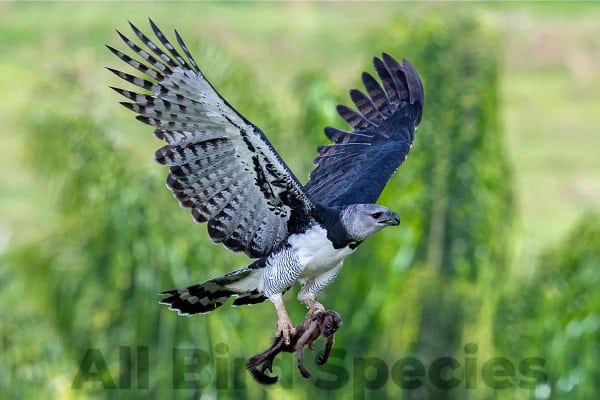
These eagles are known for their distinctive appearance, with a double crest of feathers on their head that they can raise to look larger and more intimidating. Harpy Eagles are expert hunters, using their excellent eyesight and silent flight to ambush prey in the dense forest canopy. Despite their fearsome reputation, these eagles are devoted parents, with pairs often staying together for life and sharing the duties of raising their young.
8. Bald Eagle
• Scientific Name: Haliaeetus leucocephalus
• Size: Wingspan up to 2.3 meters (7.5 feet)
• Weight: 3-6.3 kilograms (6.6-13.9 pounds)
• Lifespan: Up to 20 years in the wild, 50 in captivity
• Diet: Fish, waterfowl, small mammals
The Bald Eagle is one of the most recognizable birds of prey in the world, famous as the national symbol of the United States. Despite its name, the bird isn’t actually bald – its head is covered in white feathers that contrast sharply with its dark brown body and wings. With a wingspan that can reach over 2 meters, Bald Eagles are impressive birds both in flight and when perched.

Bald Eagles are primarily fish eaters, often seen swooping down to snatch fish from the water’s surface with their powerful talons. They’re also known for their remarkable eyesight, which is estimated to be at least four times sharper than that of humans. Bald Eagles faced a severe population decline in the mid-20th century due to pesticide use, but thanks to conservation efforts, they have made a remarkable recovery and are now a conservation success story.
9. White-Tailed Eagle
• Scientific Name: Haliaeetus albicilla
• Size: Wingspan up to 2.5 meters (8.2 feet)
• Weight: 4-6.9 kilograms (8.8-15.2 pounds)
• Lifespan: Up to 25 years in the wild
• Diet: Fish, waterfowl, small mammals
The White-Tailed Eagle, also known as the Sea Eagle, is one of the largest birds of prey in Europe. With a wingspan that can exceed 2.5 meters, these birds are truly impressive in flight. As their name suggests, adult White-Tailed Eagles have a distinctive white tail that contrasts with their dark brown body.

These eagles are typically found near large bodies of water, where they hunt for fish and waterfowl. They’re known for their incredible hunting skills, able to snatch fish from the water’s surface or dive to catch diving birds. White-Tailed Eagles faced extinction in much of Europe due to persecution and pesticide use, but reintroduction programs have helped restore populations in many areas. Today, seeing one of these majestic birds soaring over a loch in Scotland or a fjord in Norway is a breathtaking experience.
10. Steller’s Sea Eagle
• Scientific Name: Haliaeetus pelagicus
• Size: Wingspan up to 2.5 meters (8.2 feet)
• Weight: 5-9 kilograms (11-20 pounds)
• Lifespan: Up to 20 years in the wild, 50 in captivity
• Diet: Fish, particularly salmon, also seabirds and small mammals
The Steller’s Sea Eagle is one of the heaviest eagles in the world and a true giant among birds of prey. Native to coastal northeastern Asia, these birds are immediately recognizable by their massive yellow beak, white shoulders, and white tail. Their dark body provides a striking contrast to these lighter features.
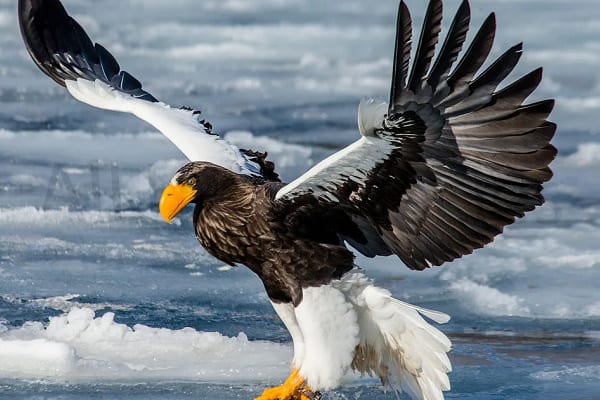
Steller’s Sea Eagles are specialized fish eaters, with a particular fondness for salmon. They’re often found near rivers and coastal areas where salmon run, using their powerful talons to snatch fish from the water. These eagles are well-adapted to cold climates, with feathered legs that help them stay warm in the chilly waters where they hunt. Despite their impressive size and hunting skills, Steller’s Sea Eagles face threats from habitat loss and pollution, making conservation efforts crucial for their survival.
Where to find Largest Birds of Prey on the Earth
If you’re eager to see these magnificent birds in person, here are some places where you might spot them:
- California Condor: Grand Canyon National Park, Arizona, USA
- Andean Condor: Colca Canyon, Peru
- Cinereous Vulture: Monfragüe National Park, Spain
- Lammergeier: Ordesa y Monte Perdido National Park, Spain
- Lappet-Faced Vulture: Serengeti National Park, Tanzania
- Philippine Eagle: Mount Apo, Philippines
- Harpy Eagle: Darien National Park, Panama
- Bald Eagle: Alaska, USA
- White-Tailed Eagle: Isle of Mull, Scotland
- Steller’s Sea Eagle: Hokkaido, Japan
Remember, many of these birds are rare or endangered, so always observe them responsibly and from a distance. It’s best to go with experienced guides who know how to find these birds without disturbing them.
Read More🐦Related Articles:
- Swallow Spiritual meaning
- Blue Colored Birds
- Hummingbirds in Maryland
- Spiritual Meaning Of Ducks
- Can Birds Eat Popcorn?
- Woodpecker Spiritual Meaning
Final Thoughts
The world’s largest birds of prey are truly awe-inspiring creatures. From the massive wingspans of condors to the powerful talons of eagles, these birds showcase the incredible diversity and adaptability of nature. Each species plays a crucial role in its ecosystem, whether it’s cleaning up carrion, controlling populations of other animals, or serving as indicators of environmental health.




